There’s a lot to like about the (somewhat) new dog park within Athens’ Memorial Park, said Athens resident Chris Moore, or Cee Mo to friends on the local music scene.
First of all, he likes the main thing any owner likes about a dog park: It’s a place where he can take off mixed-breed Cooper’s leash and let him run free for a while—one of the high points in Cooper’s or just about any dog’s life. “I like the rolling hills,” Moore said, looking out over the gentle slopes nestled into Memorial Park’s back side, just up from a small lake where turtles and ducks bask and beg.
“I like the size of it. And the swings,” he added, nodding toward an edge of the dog park, where a couple of fellow dog owners gently swayed in a sliver of late-afternoon shade from a line of trees outside the dog park as they kept an eye on their pooches at play.
Moore’s not the only one who gives the Memorial dog park high grades. “I love it,” said Caitlyn Riesenger, there with Pink and Poppy, a pitbull/lab mix and a Chihuahua mix.
The Athens-Clarke County government operates three dog parks. Wiggley Field, at Southeast Clarke Park, is larger and features a separate area for pint-sized pooches, while out at Sandy Creek Park, dog owners can book private areas if they or their canine pets aren’t interested in socializing in the public areas. Dogs are allowed in other Athens parks, but they’re required to be on leash.
For people who live in the most urban parts of Athens, though, Southeast Clarke and Sandy Creek parks are a long drive away. “It’s a lot more convenient than the Eastside,” said University of Georgia professor Walter Schmidt, who’s there several times a week.
Another plus for Schmidt and other steady Memorial visitors is the social aspect. On a recent visit with his pit bull Rocco, he knew the names of at least a dozen dogs, and those of their owners. “I love the people,” he said. “There are a lot of regulars here.”
There’s been a dog park in Memorial since the beginning of the century, but the current version opened only last summer, after extensive renovation not only to the dog park, but to aging sewer lines that run beneath it. It’s quite a bit different, with some added features such as a doggie drinking fountain, access for owners with impaired mobility, a concrete pad with benches and awnings for shade and a secondary entrance, with no parking, at the top of the park at Woodland Hills Drive.
Now a broad expanse of grass, the old version of the dog park was dotted with trees, and that’s the one shortcoming several owners mentioned when asked what they liked or didn’t like about the new one. “If there’s anything we don’t like, it’s a lack of shade,” Schmidt said.
“The old one, by far,” said Nathan Sonke when asked whether he preferred the old or new version as he kept an eye on his golden retriever. He also missed the trees and the shade they provided.
But Rachel Wakefield, there with Apollo and Rocky, was fine with no trees. It’s easier now to pick up dog poop, she said.
The main reason trees had to go was the “substantial erosion problems” they created, according to planning documents justifying and outlining the renovation—part of a continuing larger renovation project at Memorial Park, financed primarily with revenues from Athens-Clarke County’s voter-approved 1% Special Purpose Local Option Sales Tax, or SPLOST. Little ground cover (grass) would grow beneath the trees, and because of that, the park had become highly eroded, contributing to the silt that chokes the small lake below. “Overland stormwater flow has caused widespread erosion that visibly transports soil to the lake below. Regrading and terracing may allow for vegetation to become established and reduce erosional activity,” according to the SPLOST documents.
The renovation also allowed for the rerouting and replacement of sewer lines in the park, which transport wastewater from some Five Points neighborhoods. Those aging lines were suffering “extensive inflow and infiltration,” requiring “ongoing maintenance to remove sand.”
The trees, mostly pines, also had to come down to allow for regrading and terracing, creating more “functional space, allowing more sunlight and improving grass-growing conditions,” according to the SPLOST project description. Besides that, the trees were “generally in a state of decline due to the heavy compaction and damage to their critical root zones from persistent foot traffic.”
After a year, the grass is well established, but on park land above and below the dog park, large patches of bare clay remain for now, suggesting the erosion problem may not be completely cured.
Like what you just read? Support Flagpole by making a donation today. Every dollar you give helps fund our ongoing mission to provide Athens with quality, independent journalism.









